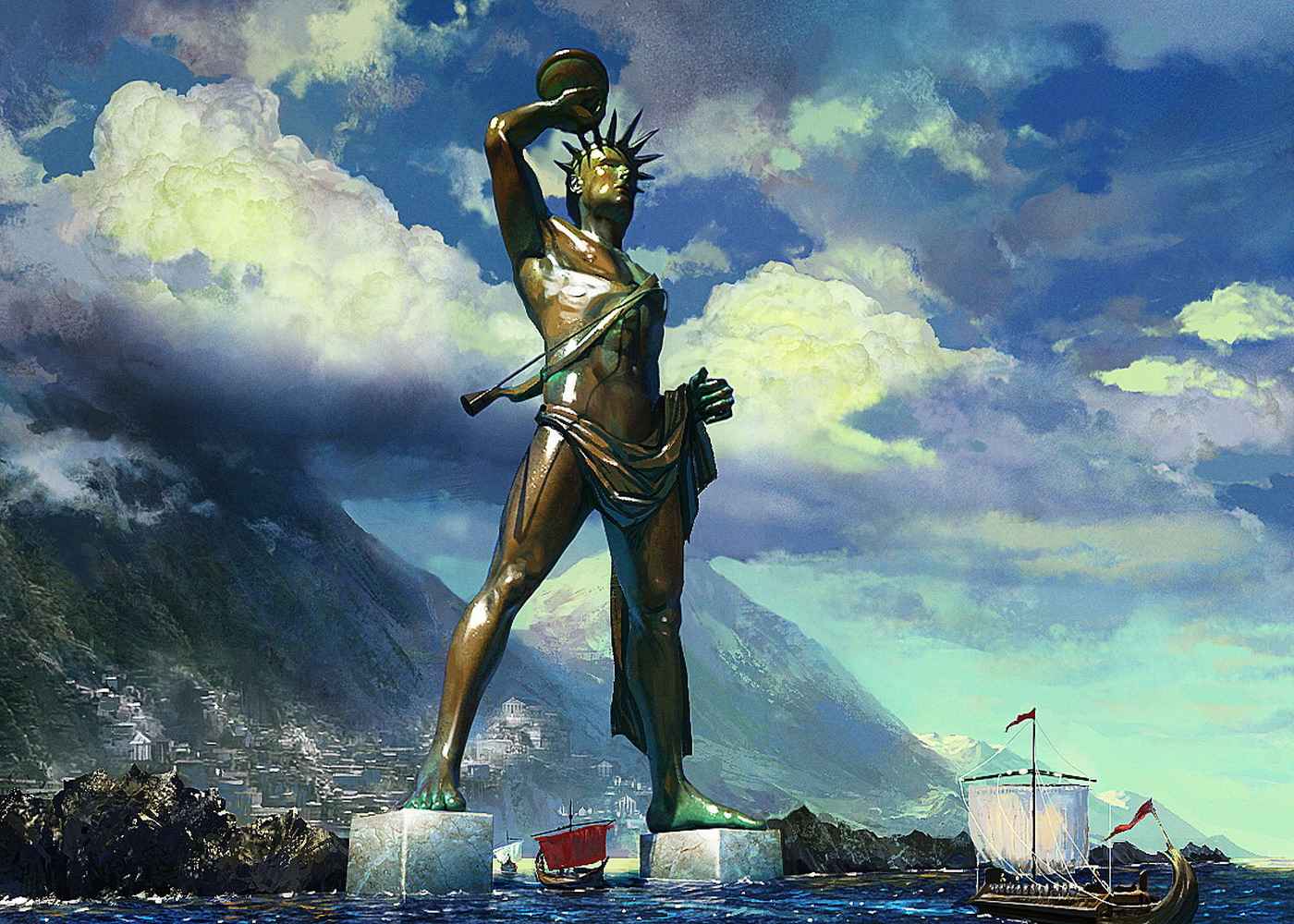The Seven Wonders of the Ancient World: The Colossus of Rhodes (Greece).
The Colossus of Rhodes: Guardian of the Ancient World

Introduction:
Standing tall at the entrance of the harbour of Rhodes, the Colossus of Rhodes was a monumental statue that epitomized the grandeur and power of ancient Greece. Erected in the 3rd century BCE, this colossal figure of Helios, the sun god, symbolized the unity and strength of the island of Rhodes.
This article delves into the history, construction, and enduring legacy of one of the Seven Wonders of the Ancient World.
Historical Context
The Colossus of Rhodes was commissioned to commemorate the successful defence of Rhodes against a siege by the forces of King Demetrius I of Macedon in 305 BCE. Following the victory, the people of Rhodes decided to honour Helios, their patron deity, by erecting a massive bronze statue in his likeness.
Designed by the sculptor Chares of Lindos, the Colossus stood as a symbol of resilience and victory against overwhelming odds.
Architectural Marvel
Constructed over a period of twelve years, the Colossus of Rhodes was a marvel of ancient engineering and craftsmanship. Standing approximately 30 meters (98 feet) tall, the statue depicted Helios striding forward with one foot on each side of the harbour entrance, holding a torch aloft in one hand and a spear in the other.
Crafted from bronze plates mounted on an iron framework, the Colossus exuded an aura of strength and majesty that left observers in awe.
Cultural Significance
Beyond its function as a monumental statue, the Colossus of Rhodes held deep cultural and religious significance for the people of Rhodes. As a representation of Helios, the sun god, the Colossus was believed to bestow protection and prosperity upon the island and its inhabitants.
Pilgrims and travellers from across the Mediterranean journeyed to Rhodes to pay homage to the Colossus and seek the blessings of Helios.
Legacy and Fate:
The Colossus of Rhodes stood as a symbol of Rhodes' power and prosperity for nearly 56 years before meeting a tragic fate. In 226 BCE, an earthquake struck Rhodes, causing the statue to collapse into pieces. Despite efforts to rebuild the Colossus, the project was ultimately abandoned due to financial constraints and logistical challenges.
Over time, the ruins of the Colossus were gradually lost to history, leaving only fragments and depictions in ancient texts and artworks.
Conclusion
Though no longer standing, the Colossus of Rhodes continues to captivate the imagination and inspire wonder centuries after its demise. As a testament to the ingenuity and ambition of ancient civilizations, the Colossus reminds us of the enduring quest to create lasting monuments that transcend the bounds of time and space. Its legacy lives on as a symbol of human achievement and the indomitable spirit of those who dare to reach for the heavens.
References
- Beekes, R.S.P. (2009). Etymological Dictionary of Greek. Brill. p. 740. ISBN 9789004174184.
- Higgins, Reynold (1988). "The Colossus of Rhodes". In Clayton, Peter A.; Price, Martin Jessop (eds.). The Seven Wonders of the Ancient World. Psychology Press. p. 130. ISBN 9780415050364.
- Strabo. Geography. 14.2.5.
- ^ Jump up to:
- "Why Have There Been Plans to Build a New Colossus of Rhodes? | Britannica". www.britannica.com. Retrieved 2024-02-07.
- Malalas, J. Chronography. Bks 10–11, 11.279.
- Boatwright, Mary T. (2002). Hadrian and the Cities of the Roman Empire. Princeton University Press. p. 24. ISBN 978-0-6910-9493-9.
- Suda. ka.1932.
- Constantine VII Porphyrogenitos. De administrando imperio. xx–xxi.
- ^ Jump up to:
- "AM 6145, AD 652/-3". The Chronicle of Theophanes Confessor. Oxford, UK: Clarendon Press. 1997. p. 481.
- Conrad, L.I. (July 1996). "The Arabs and the Colossus". Journal of the Royal Asiatic Society. 6 (2): 165–187. doi:10.1017/S1356186300007173. JSTOR 25183179. S2CID 163298319.
- Williams, Kate (26 December 2015). "Rhodes reconstruction project will be a colossal gamble for Greece – but it might well pay off". The Guardian. Retrieved 25 July 2016.
- Bennett, Jay (7 January 2016). "There's a plan to rebuild the Colossus of Rhodes". Popular Mechanics. Retrieved 25 July 2016.
- Pliny the Elder. Natural History. xxxiv.18.
- Accounts of Philo of Byzantium ca. 150 BC and Pliny (Plineus Caius Secundus) ca. 50 AD based on viewing the broken remains
- "Description, location, & facts". Colossus of Rhodes. britannica.com. April 2023.
























































